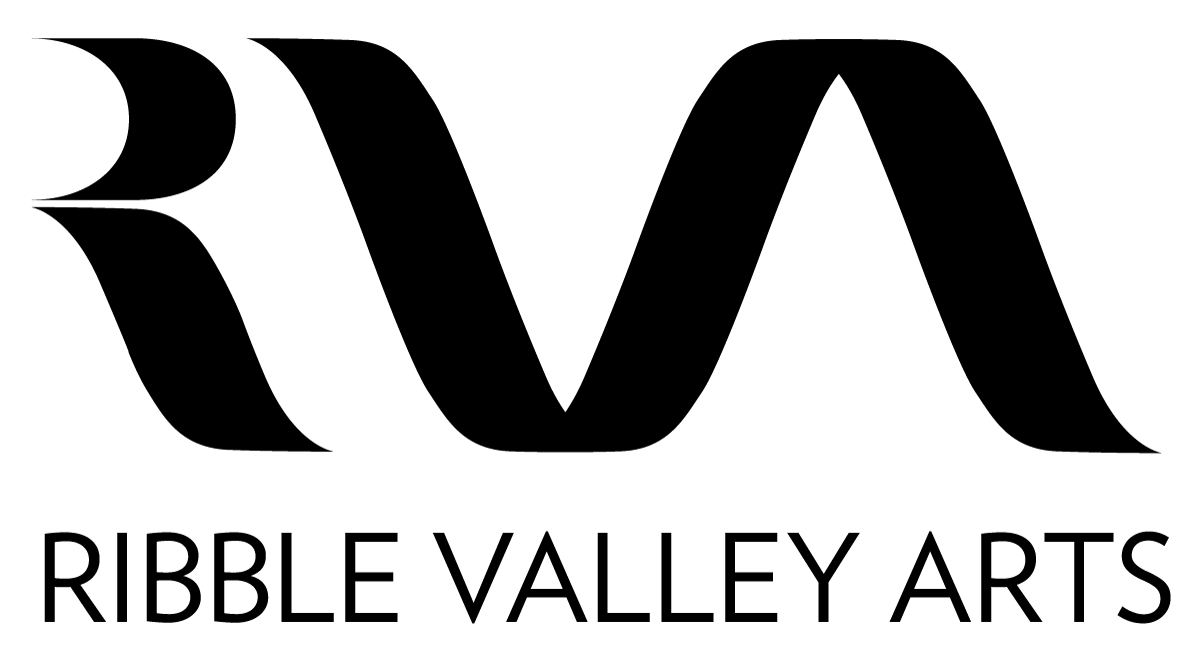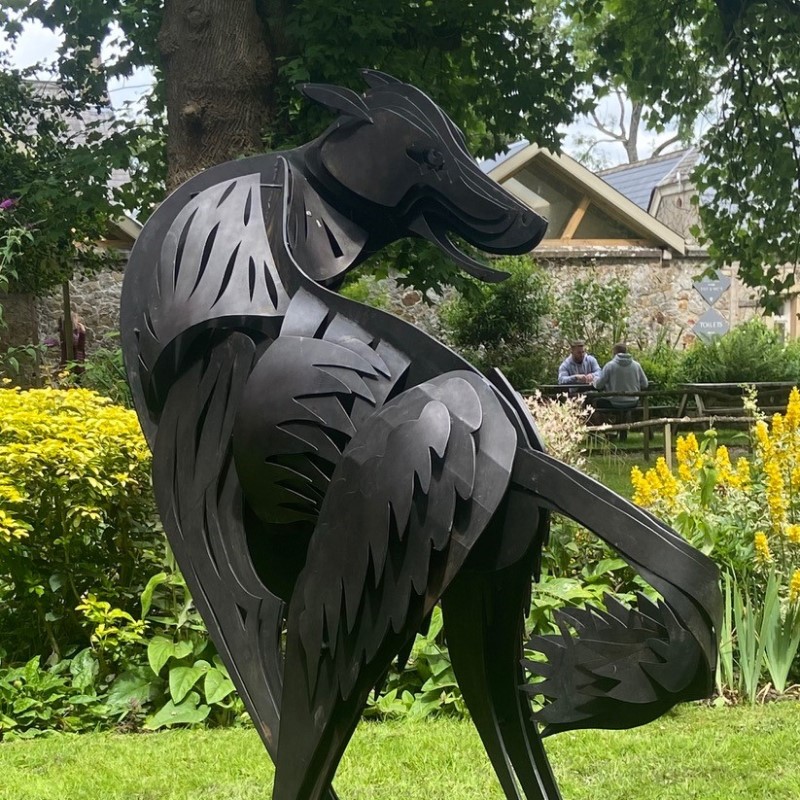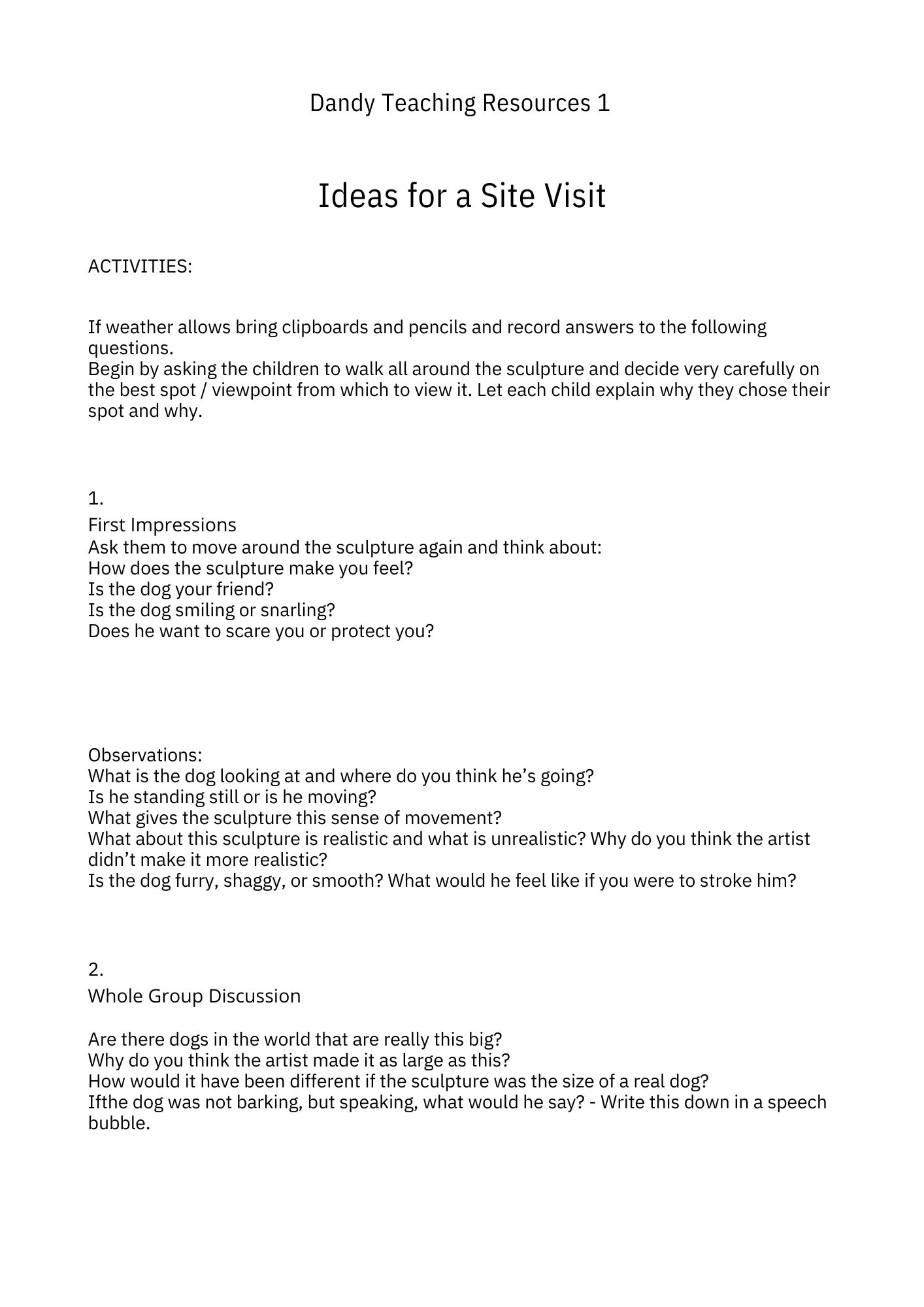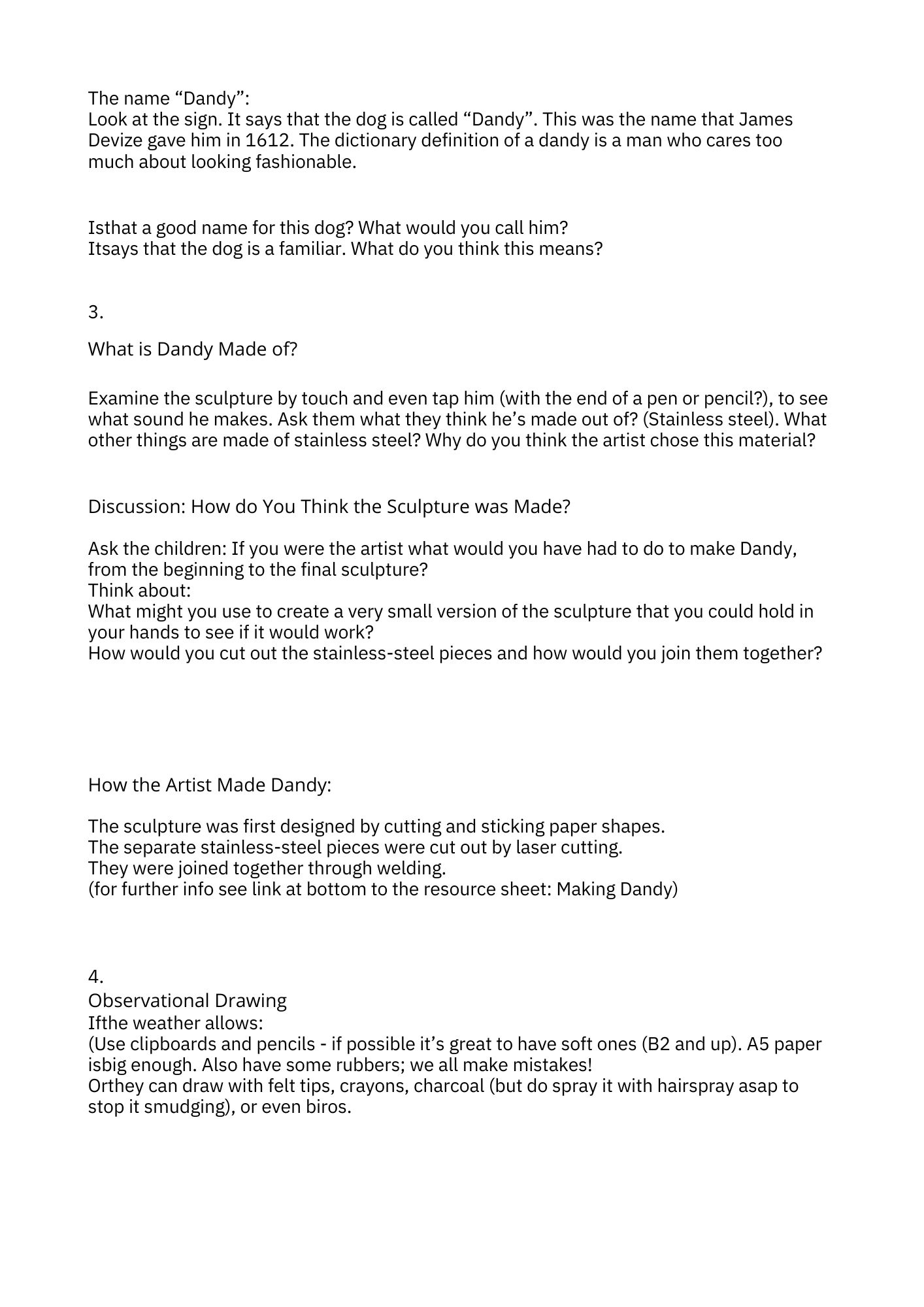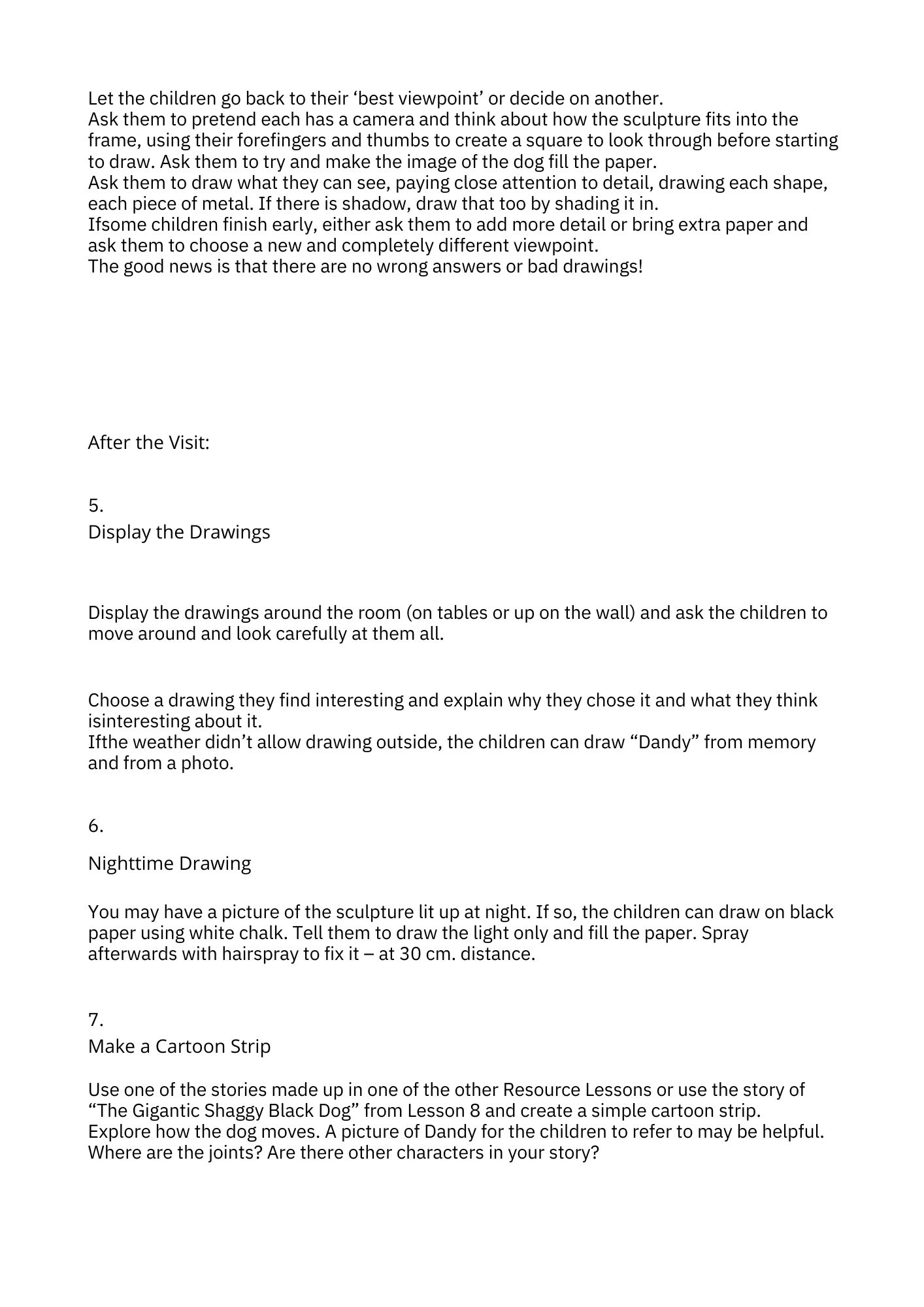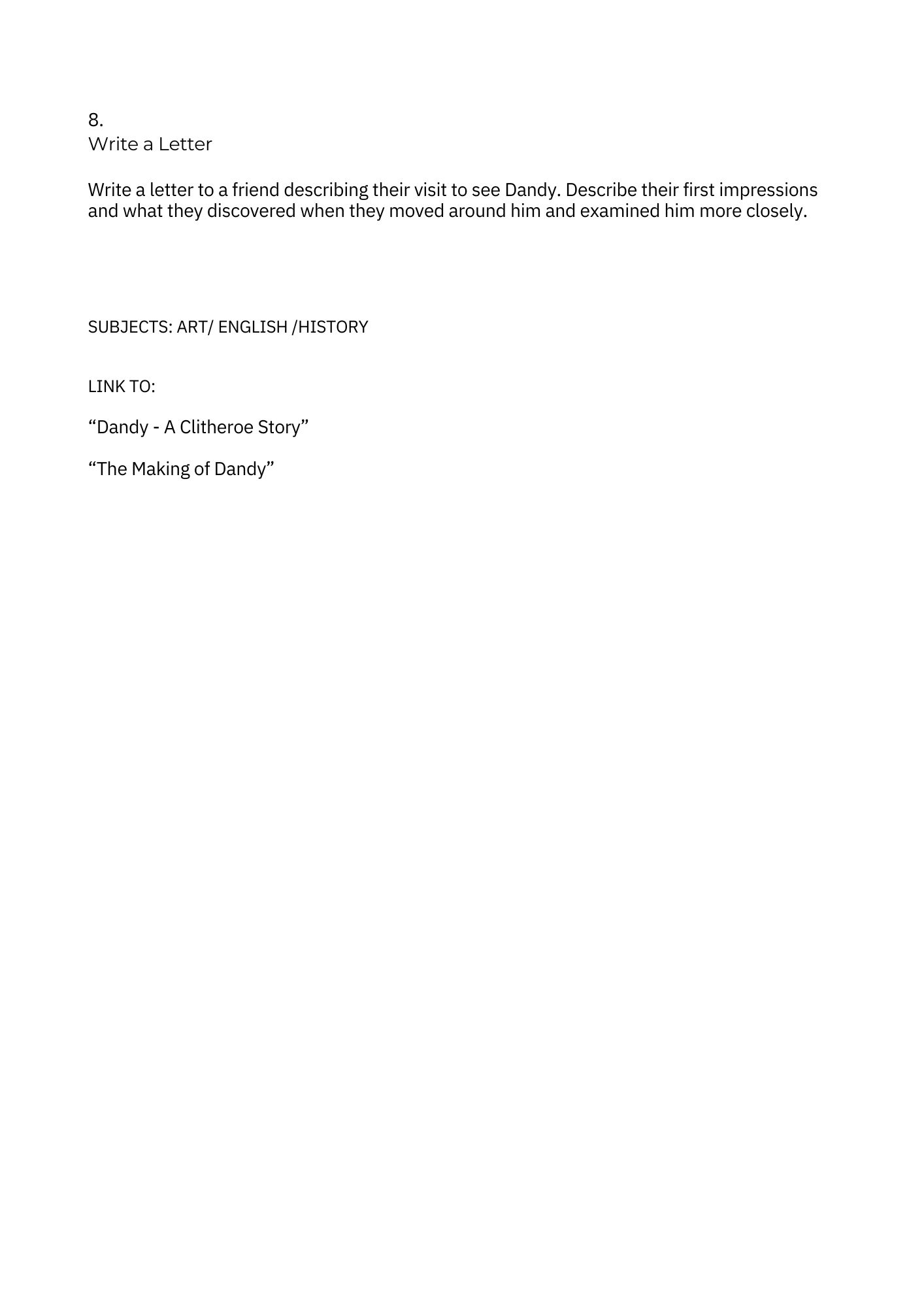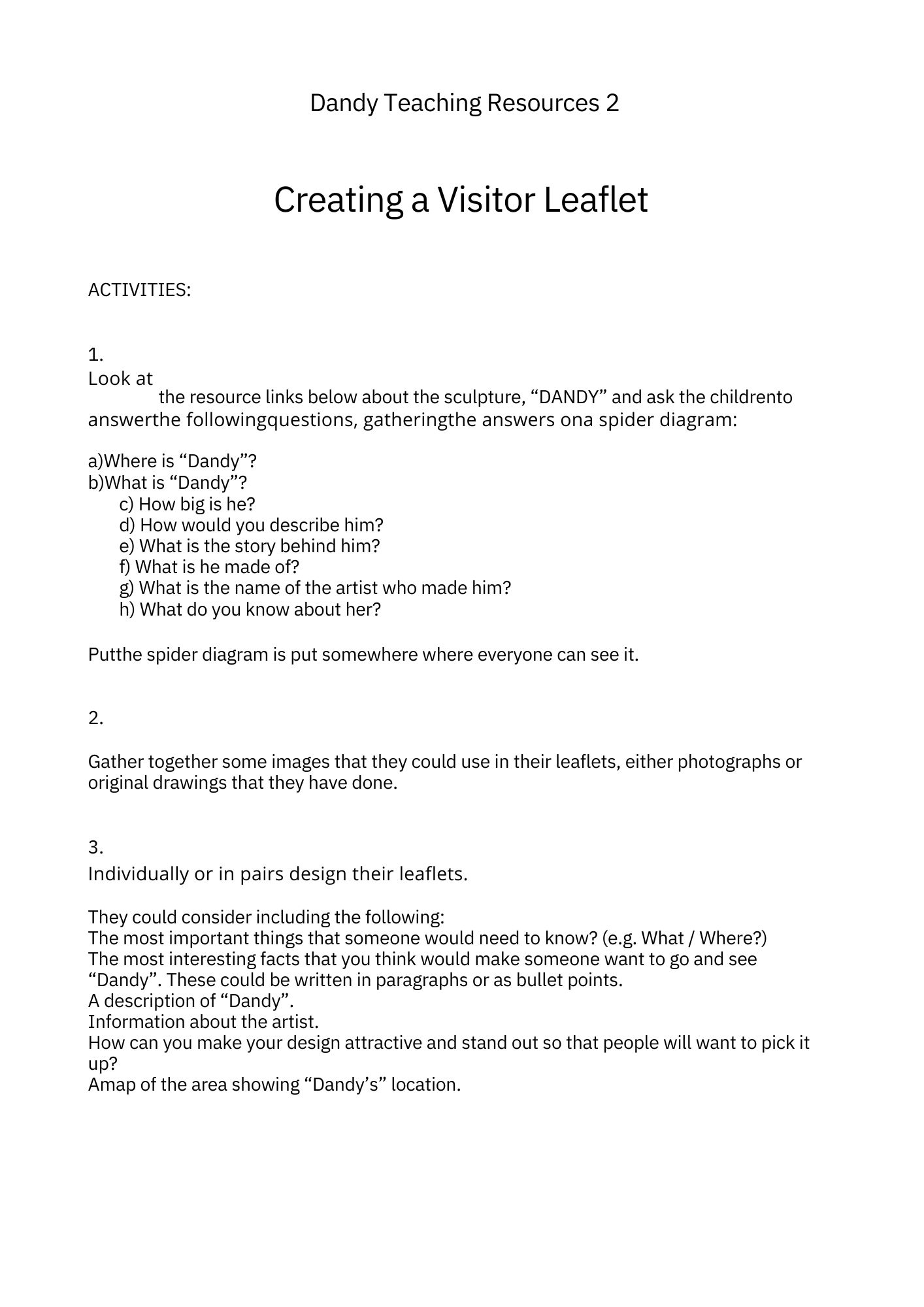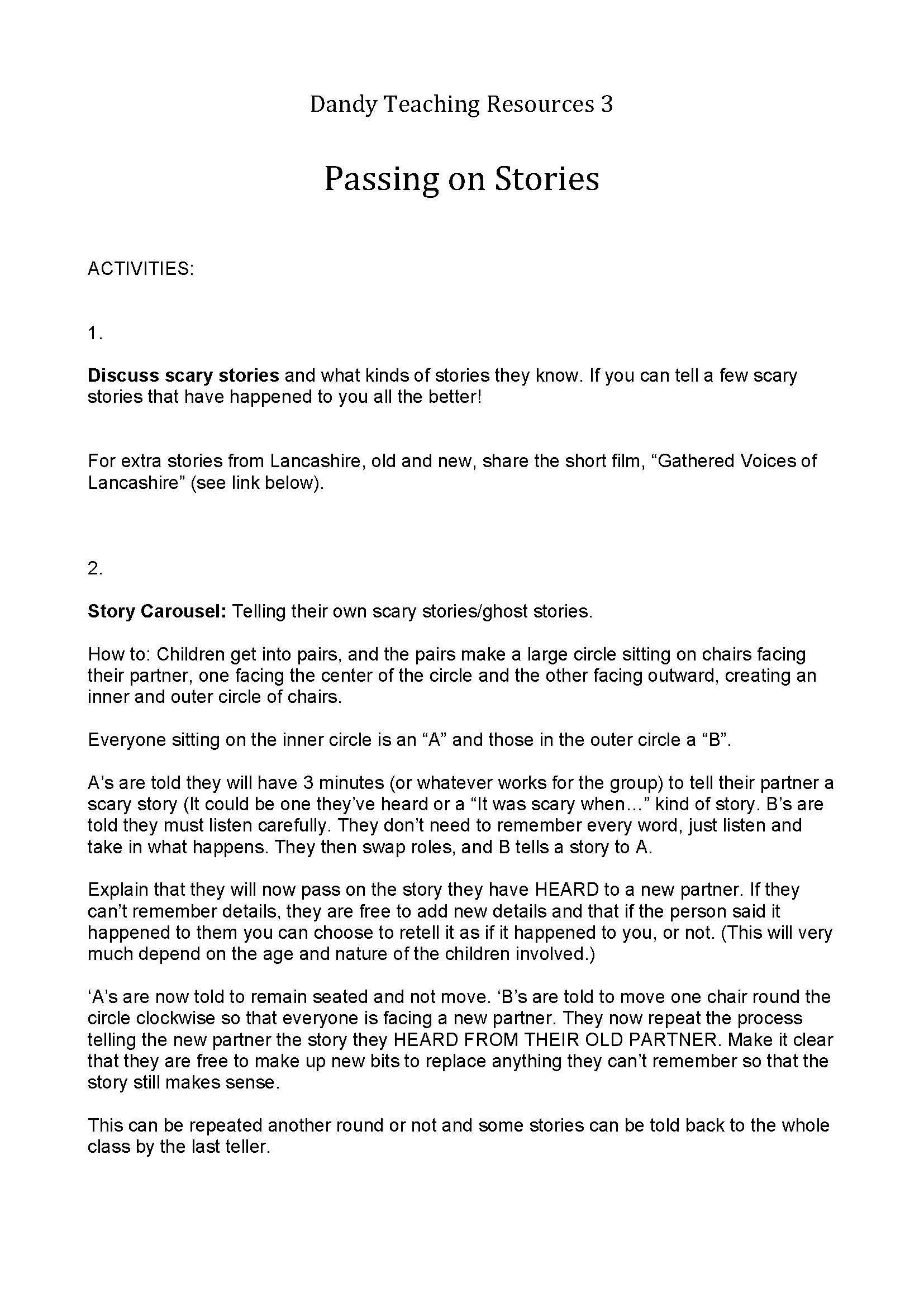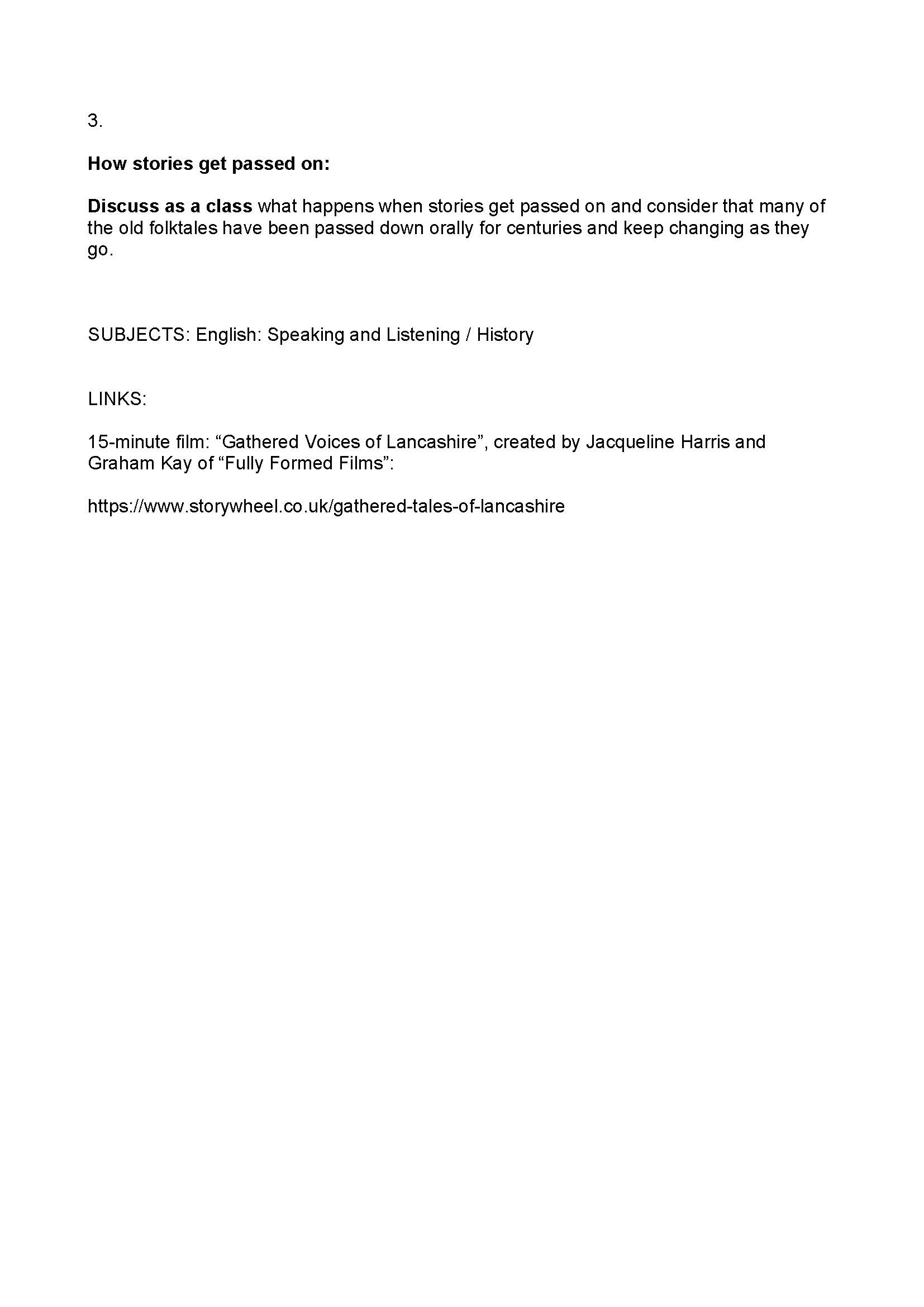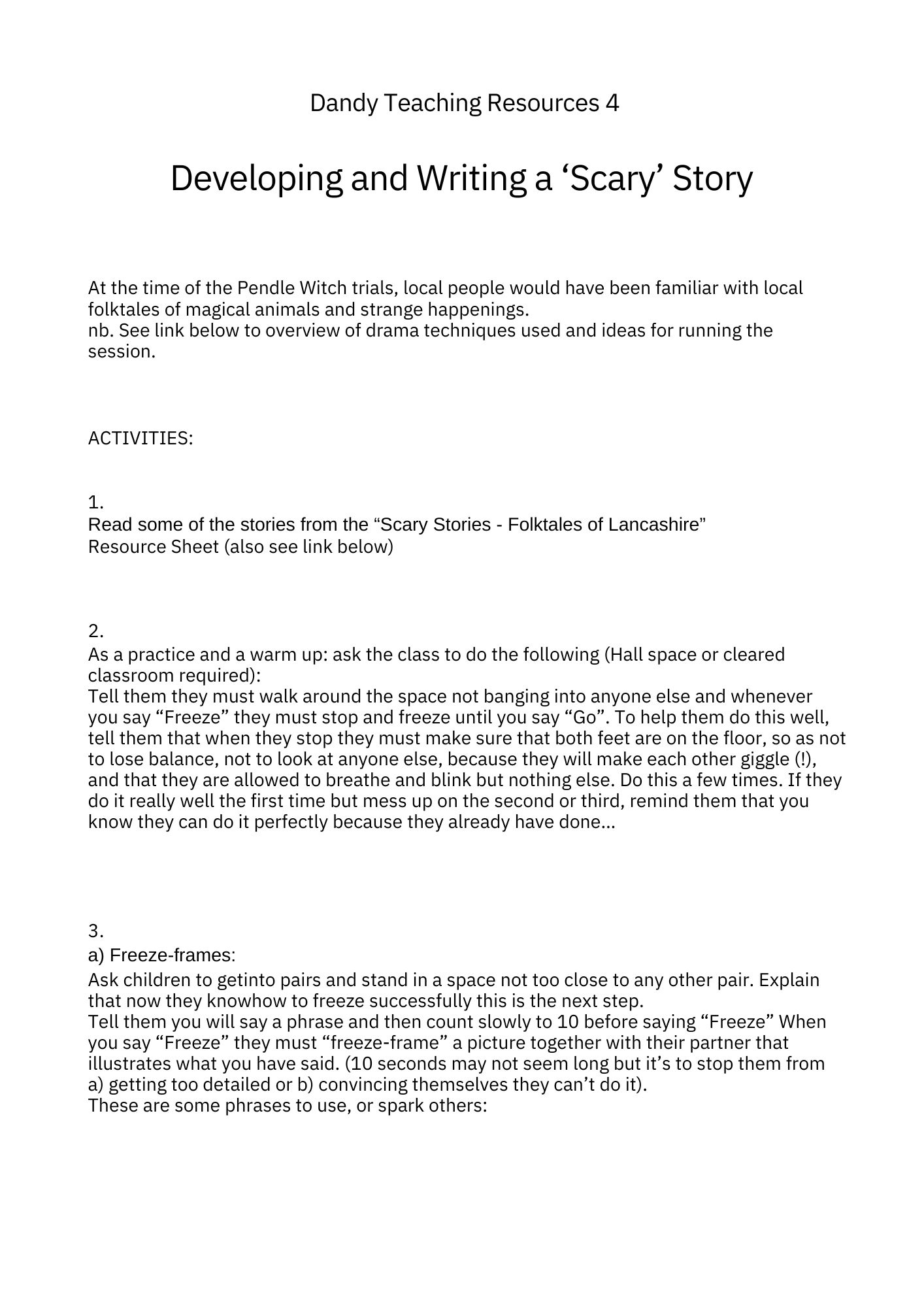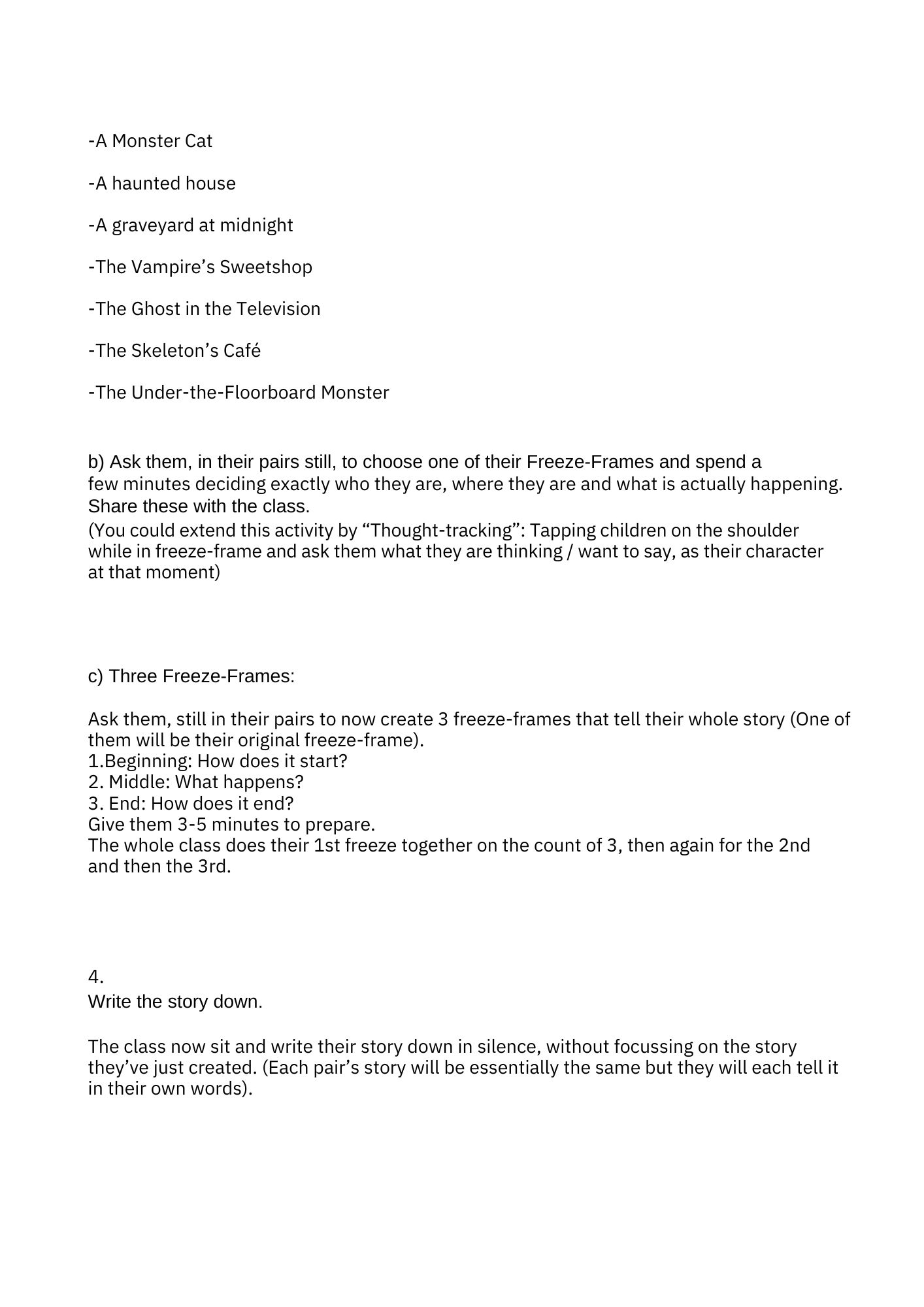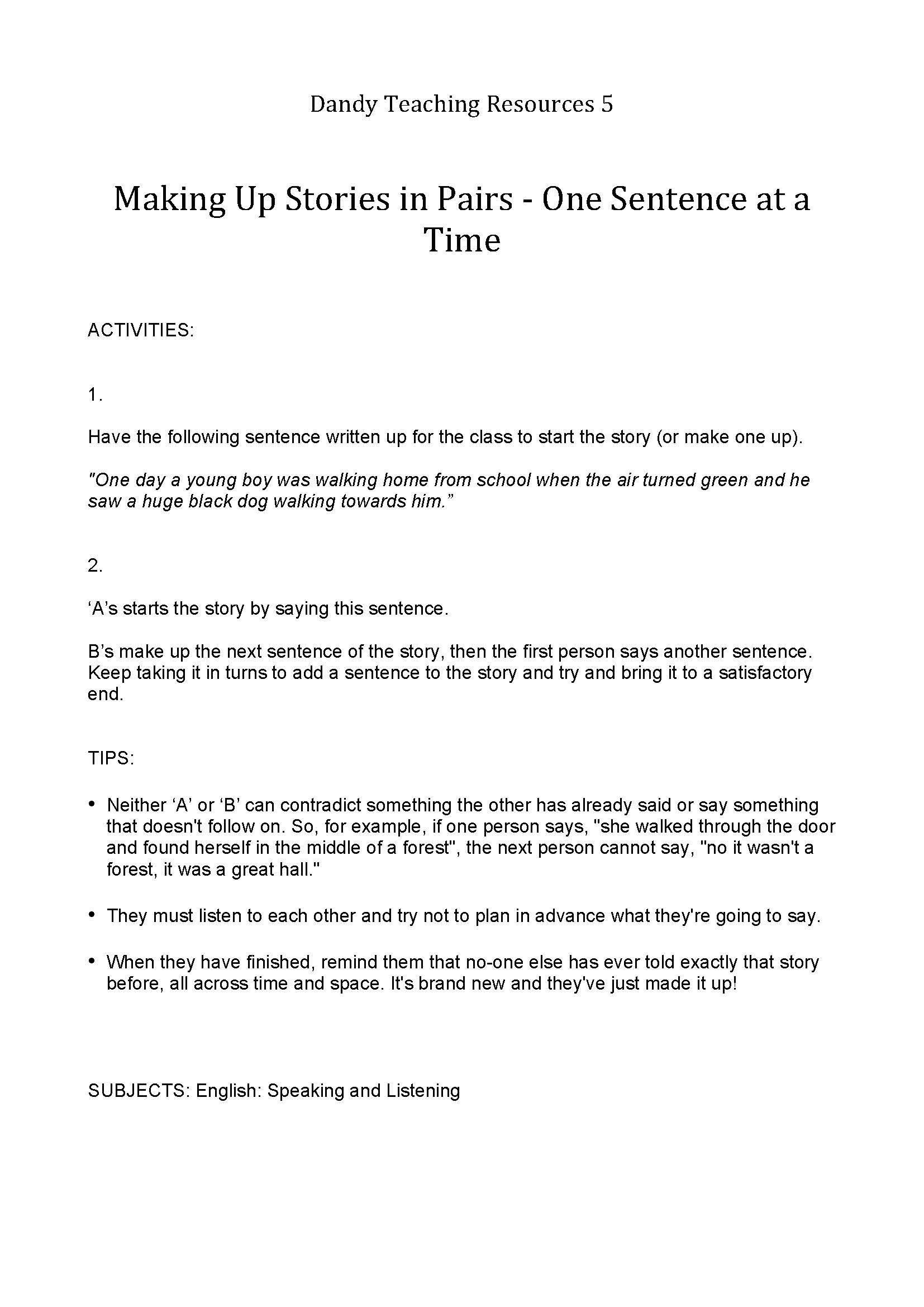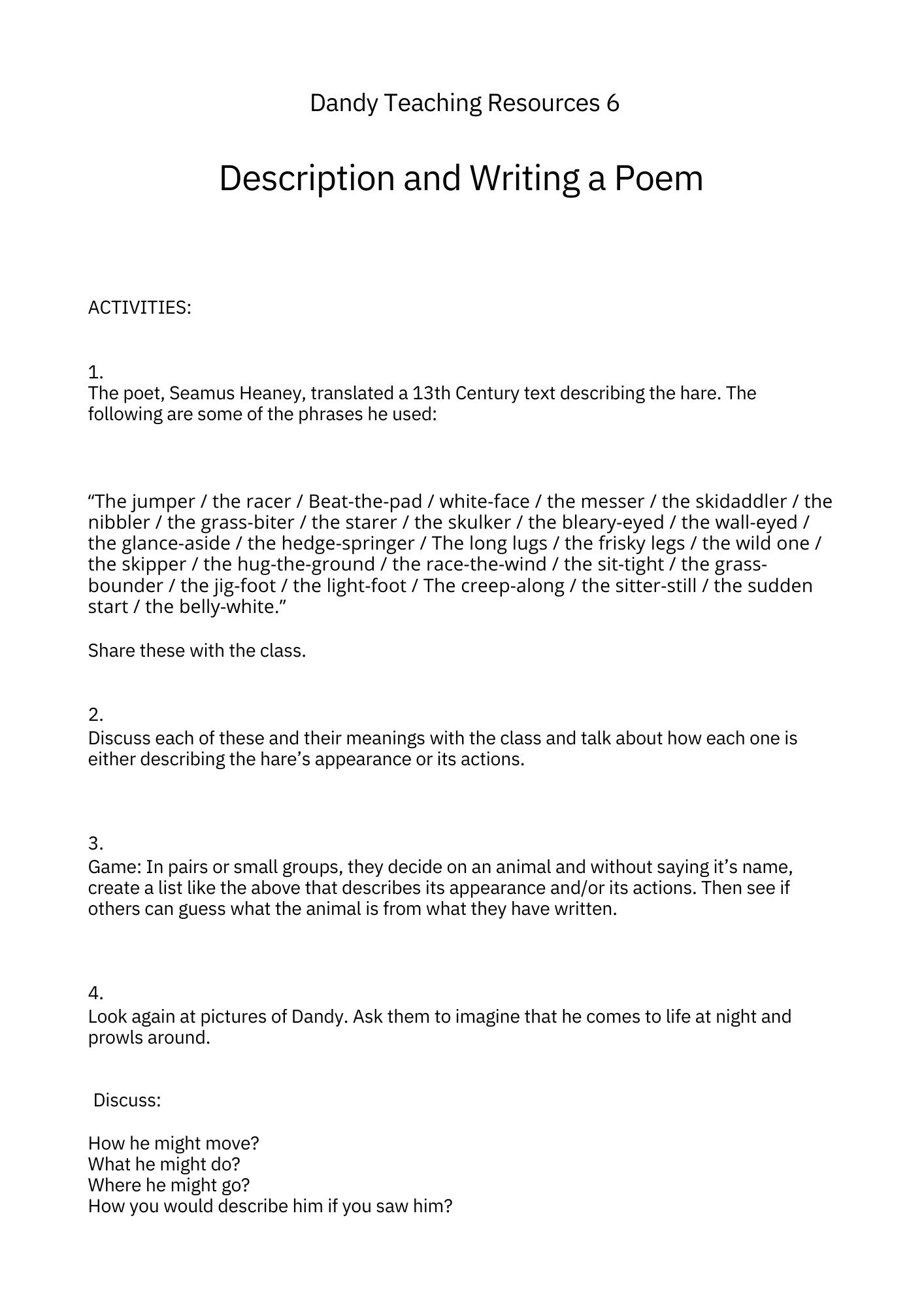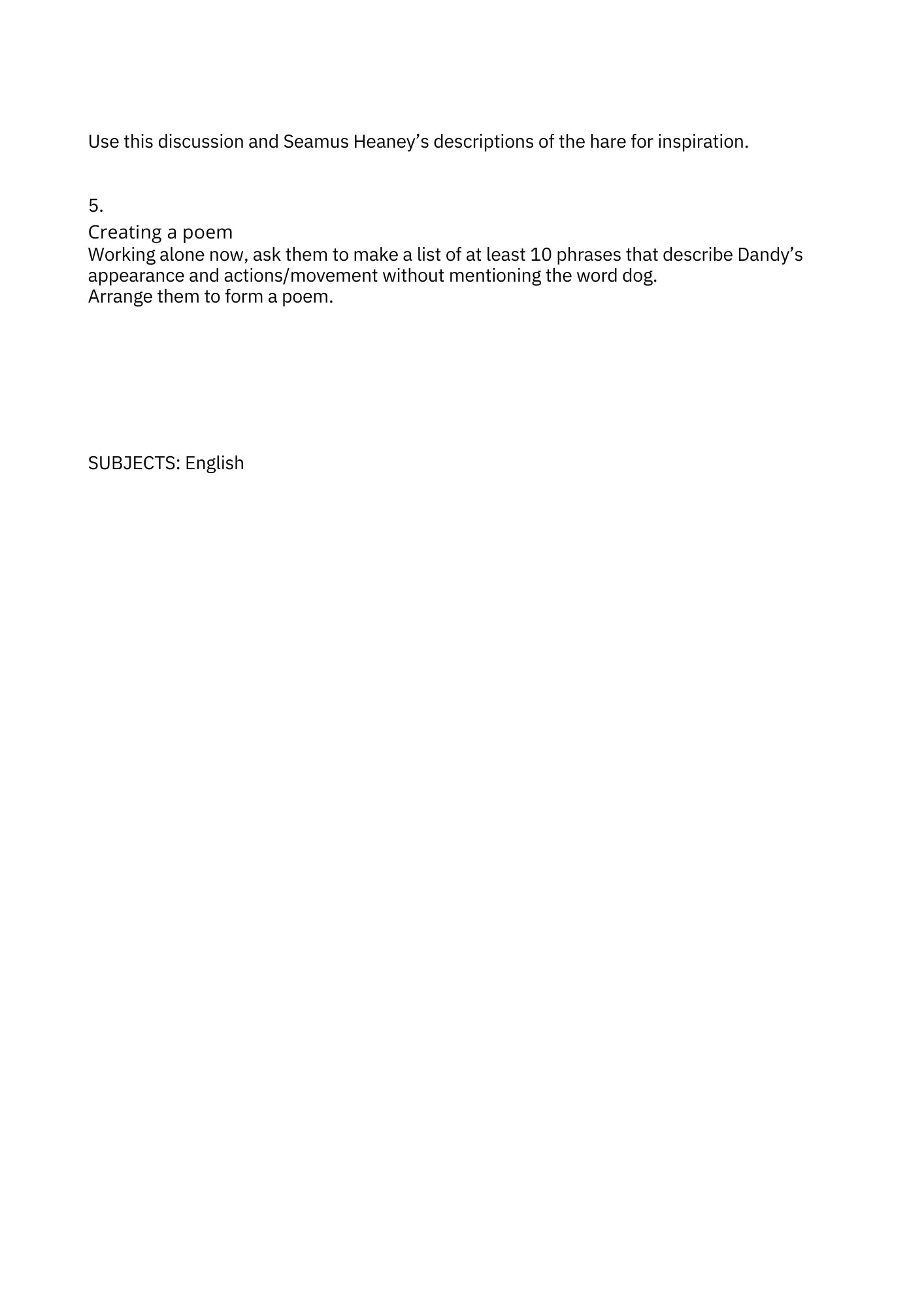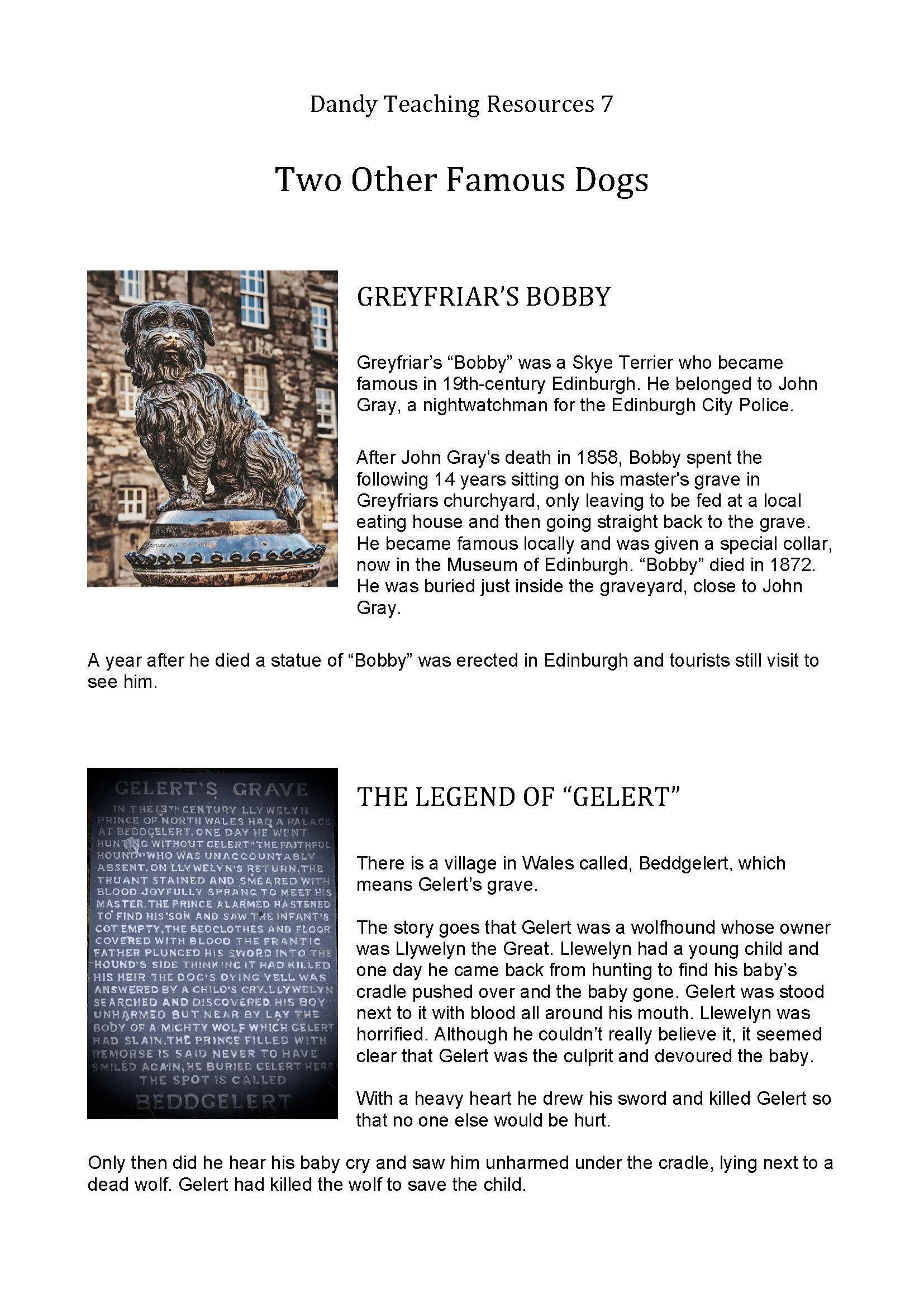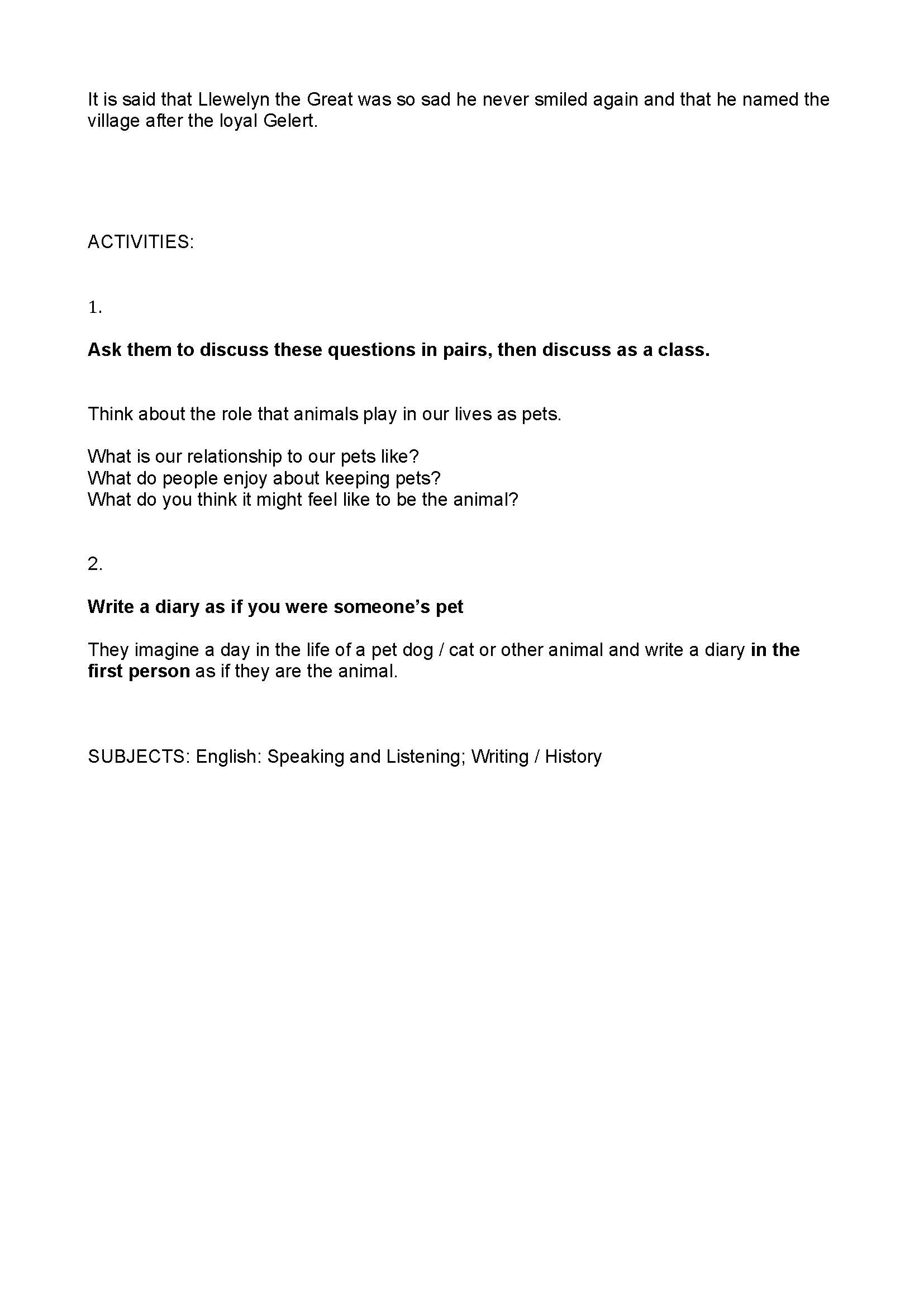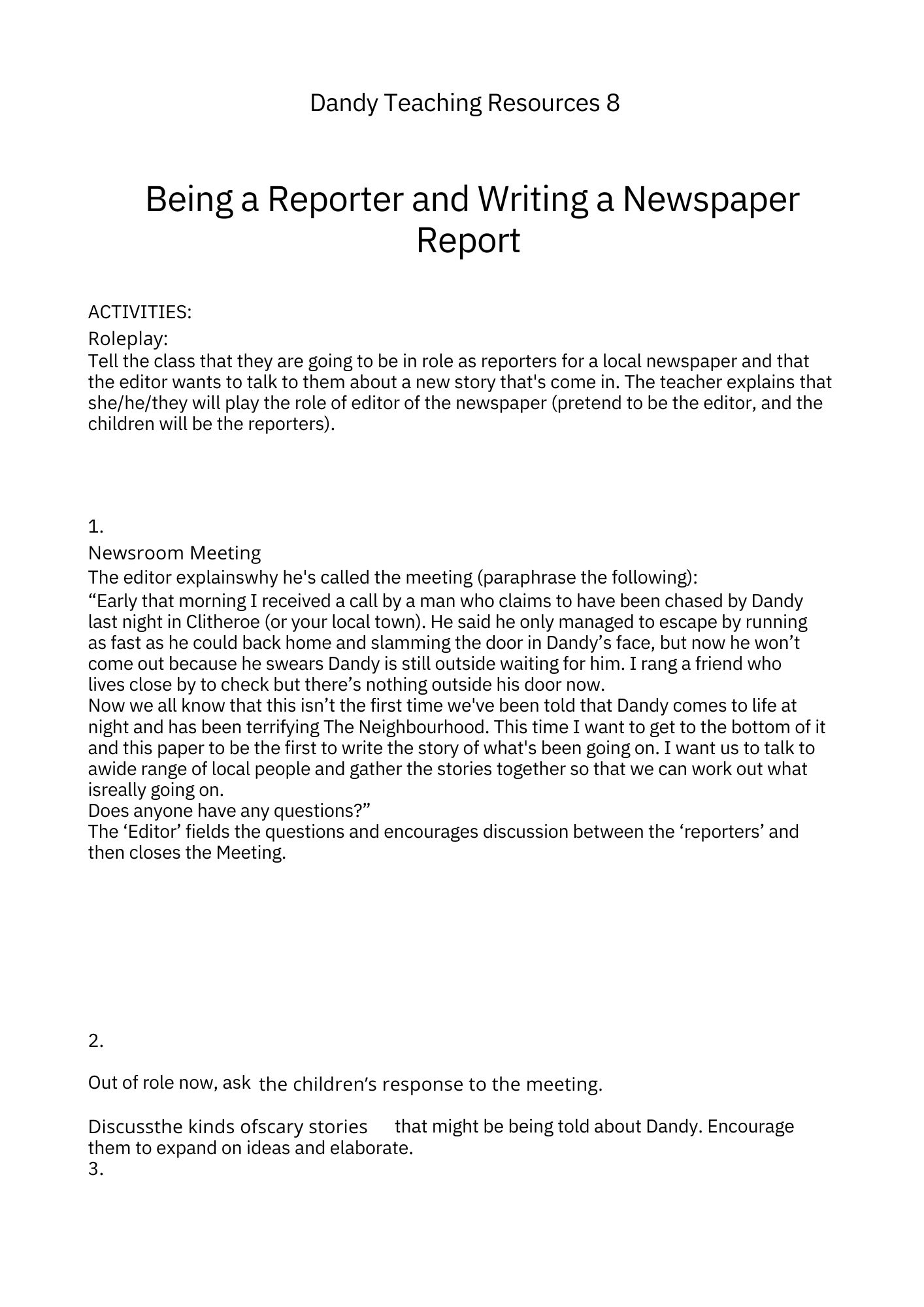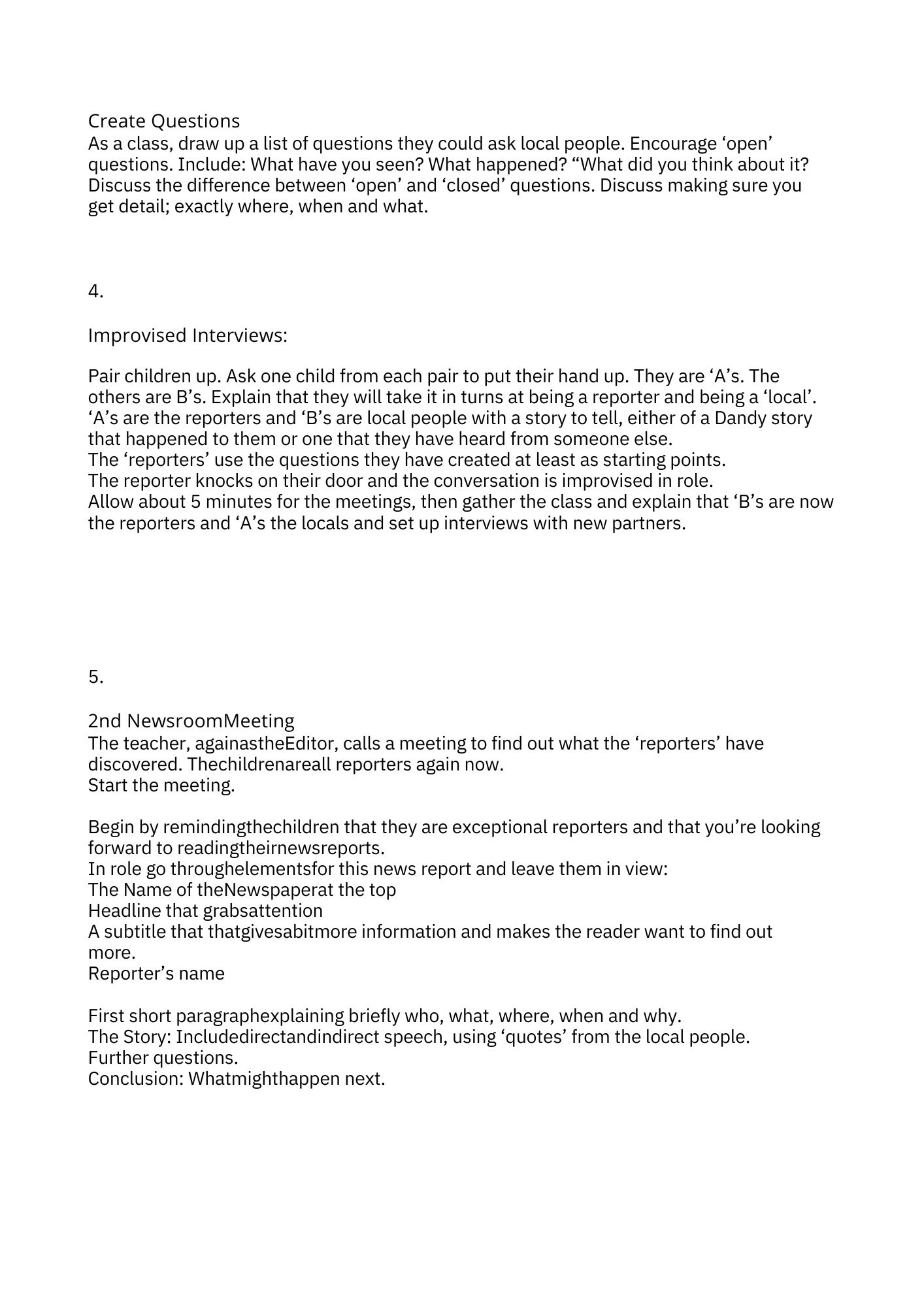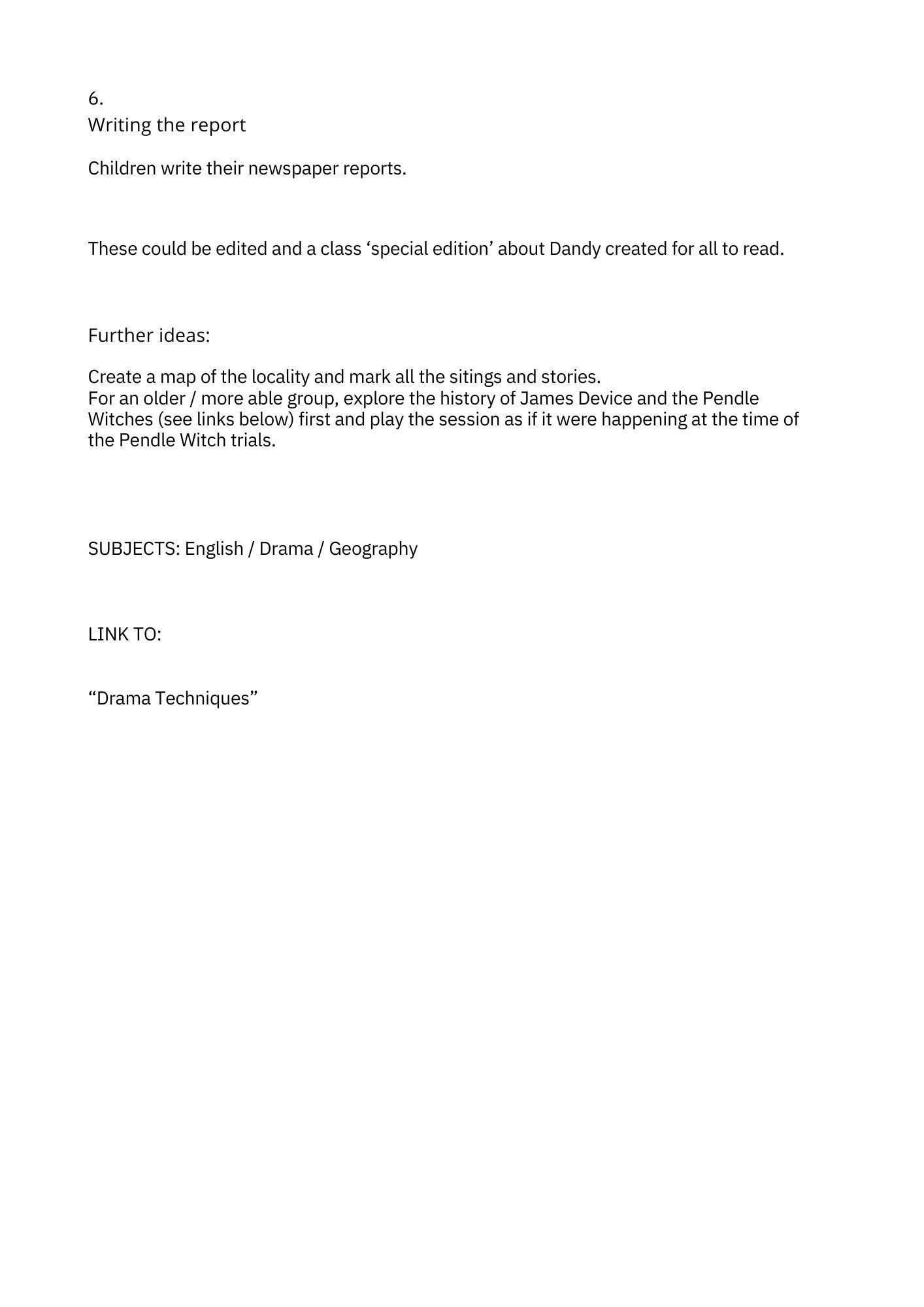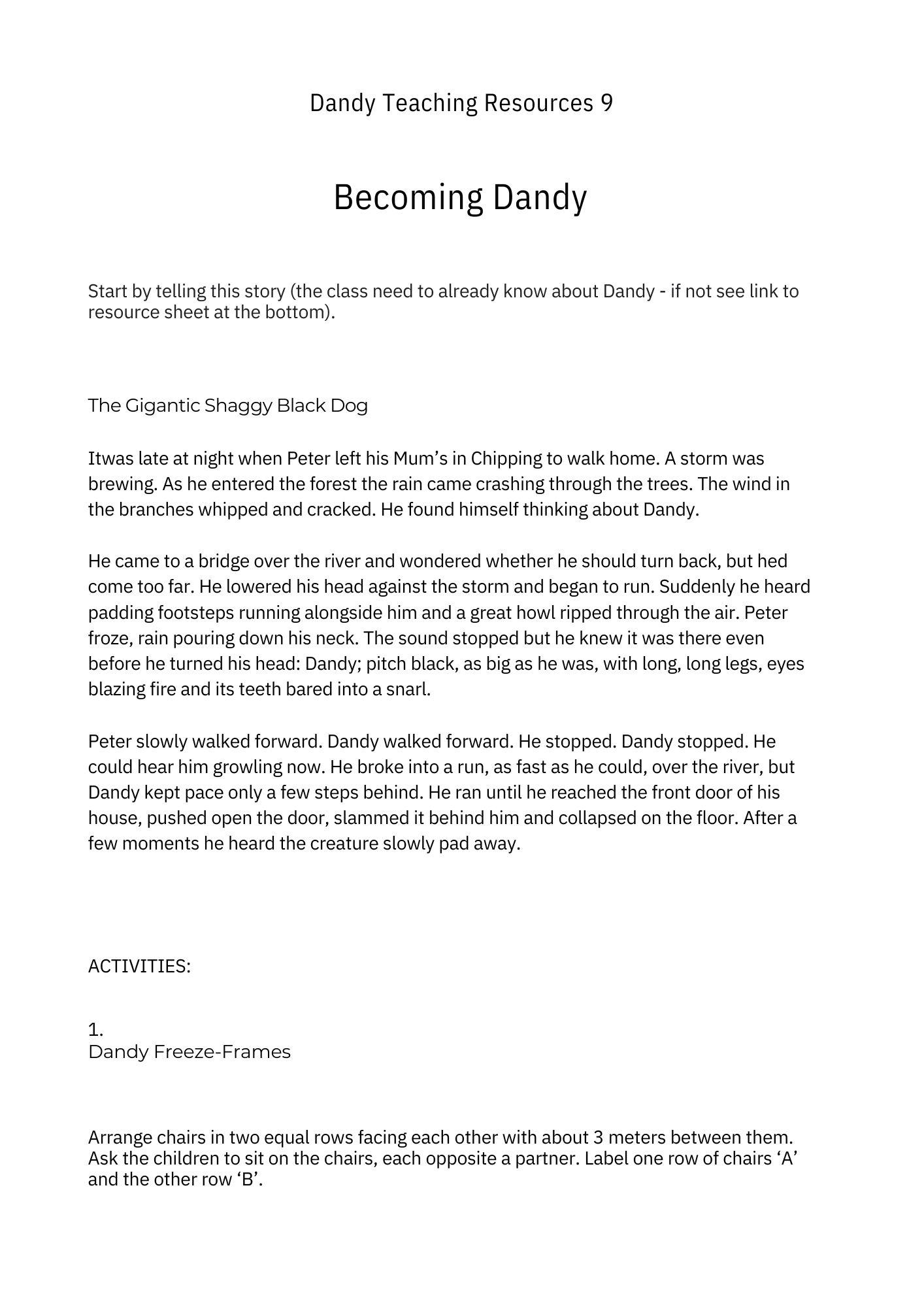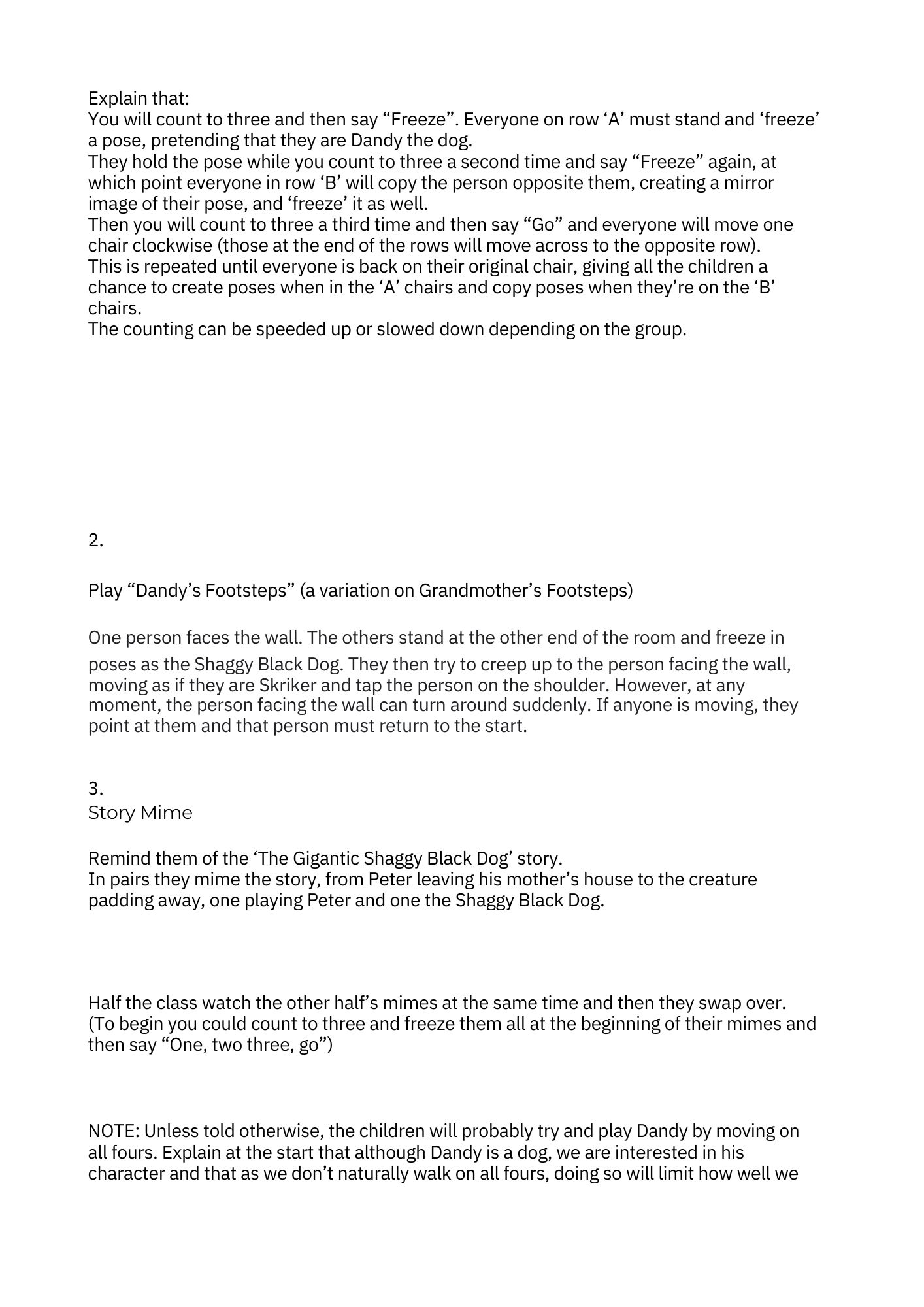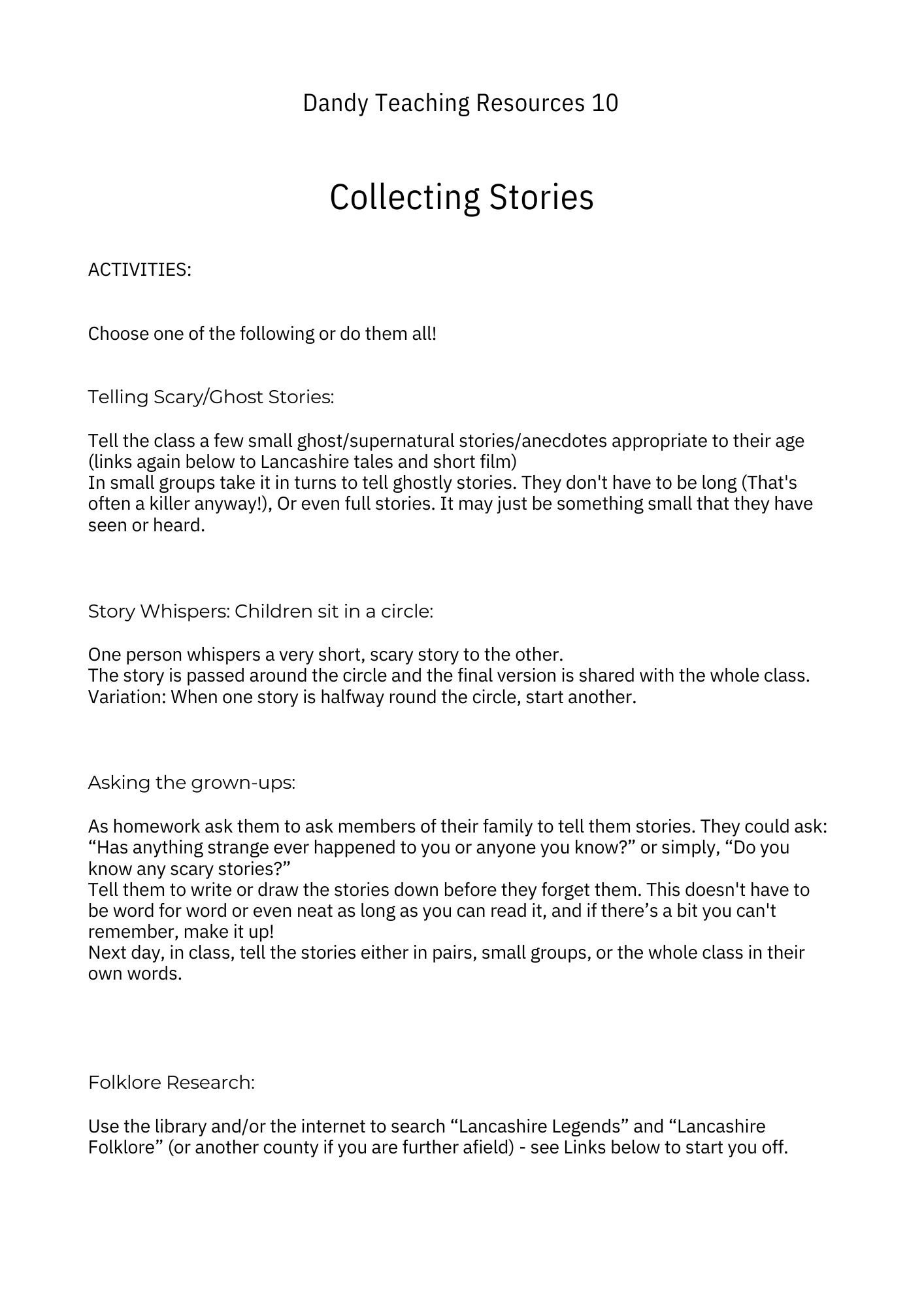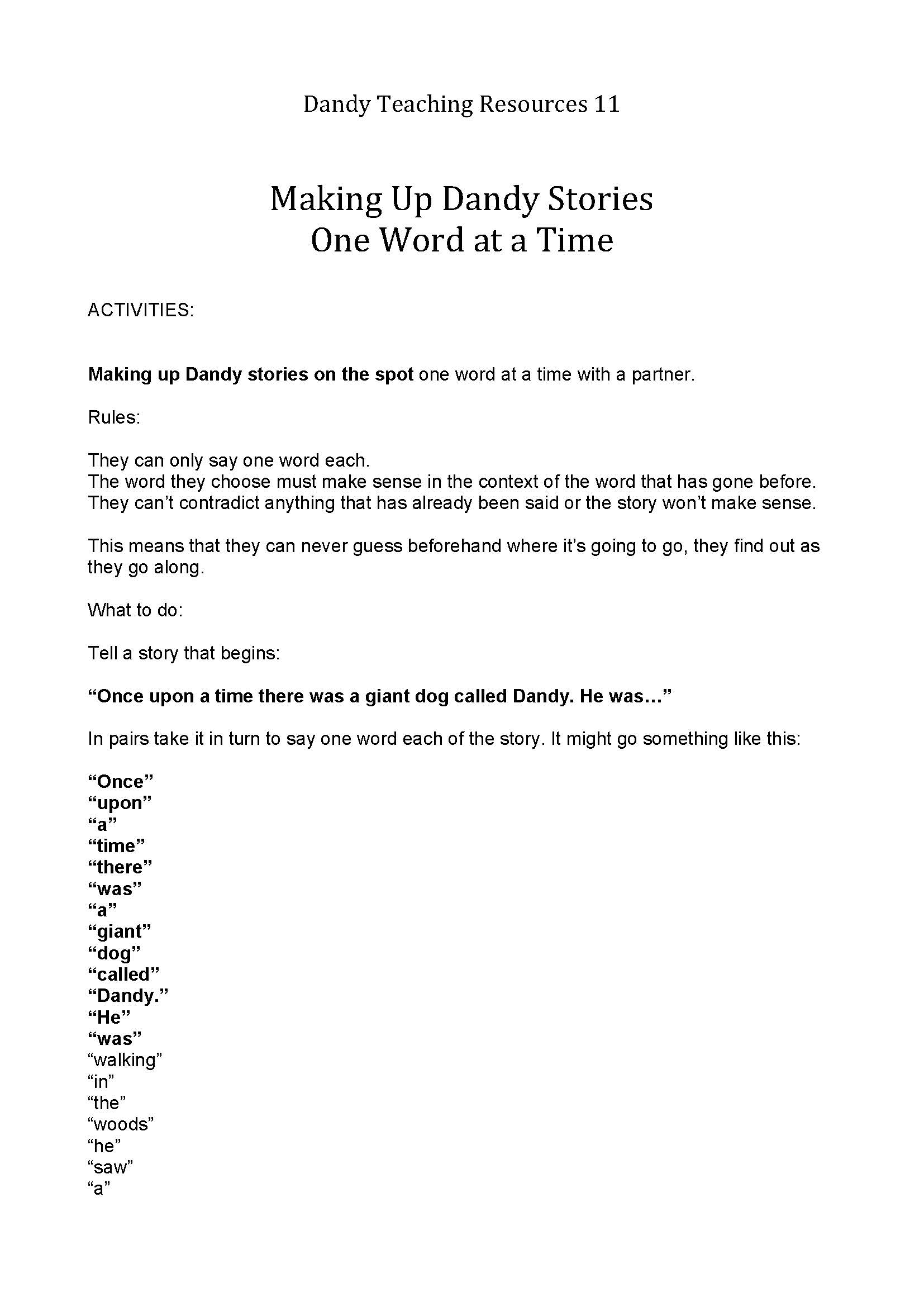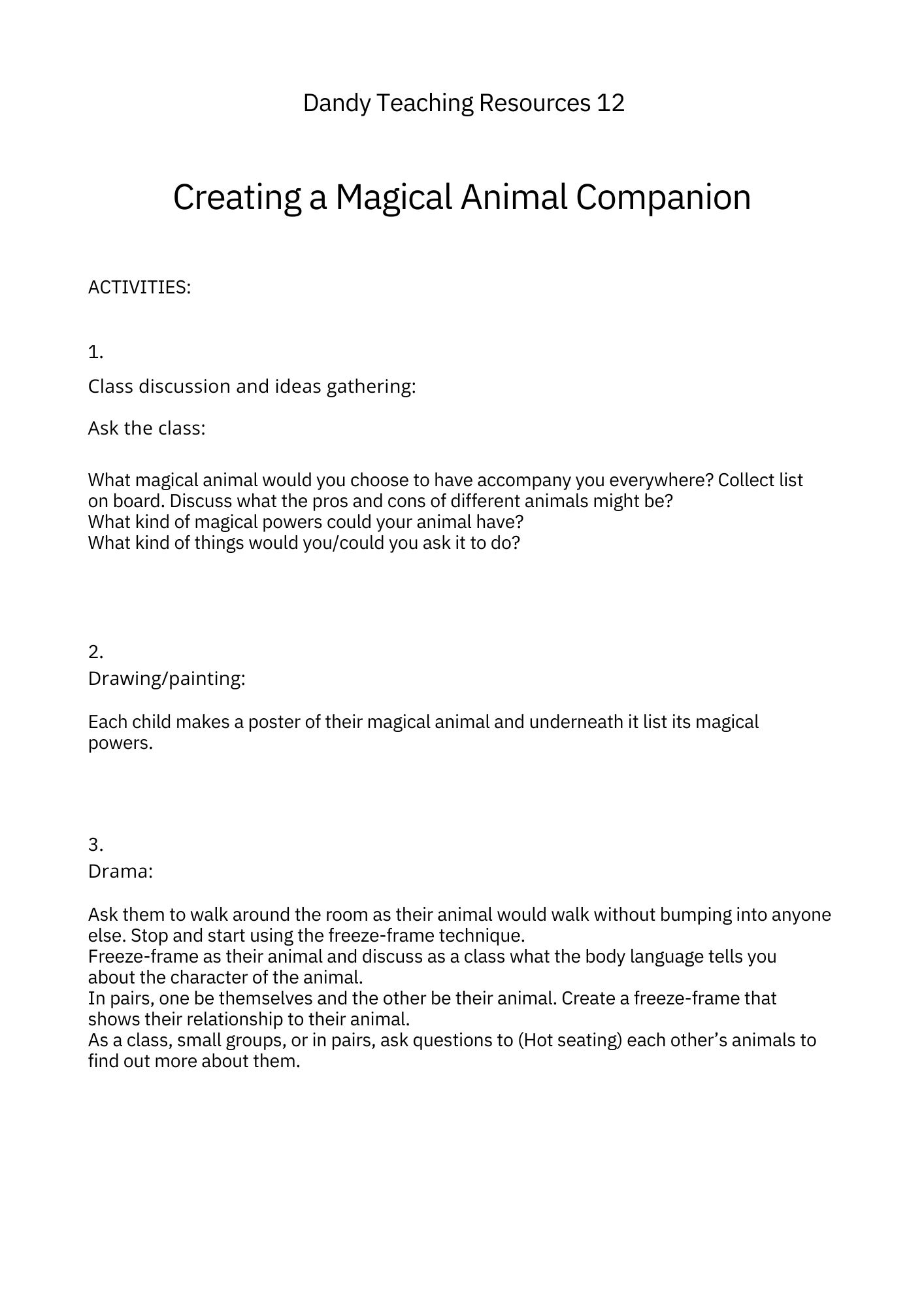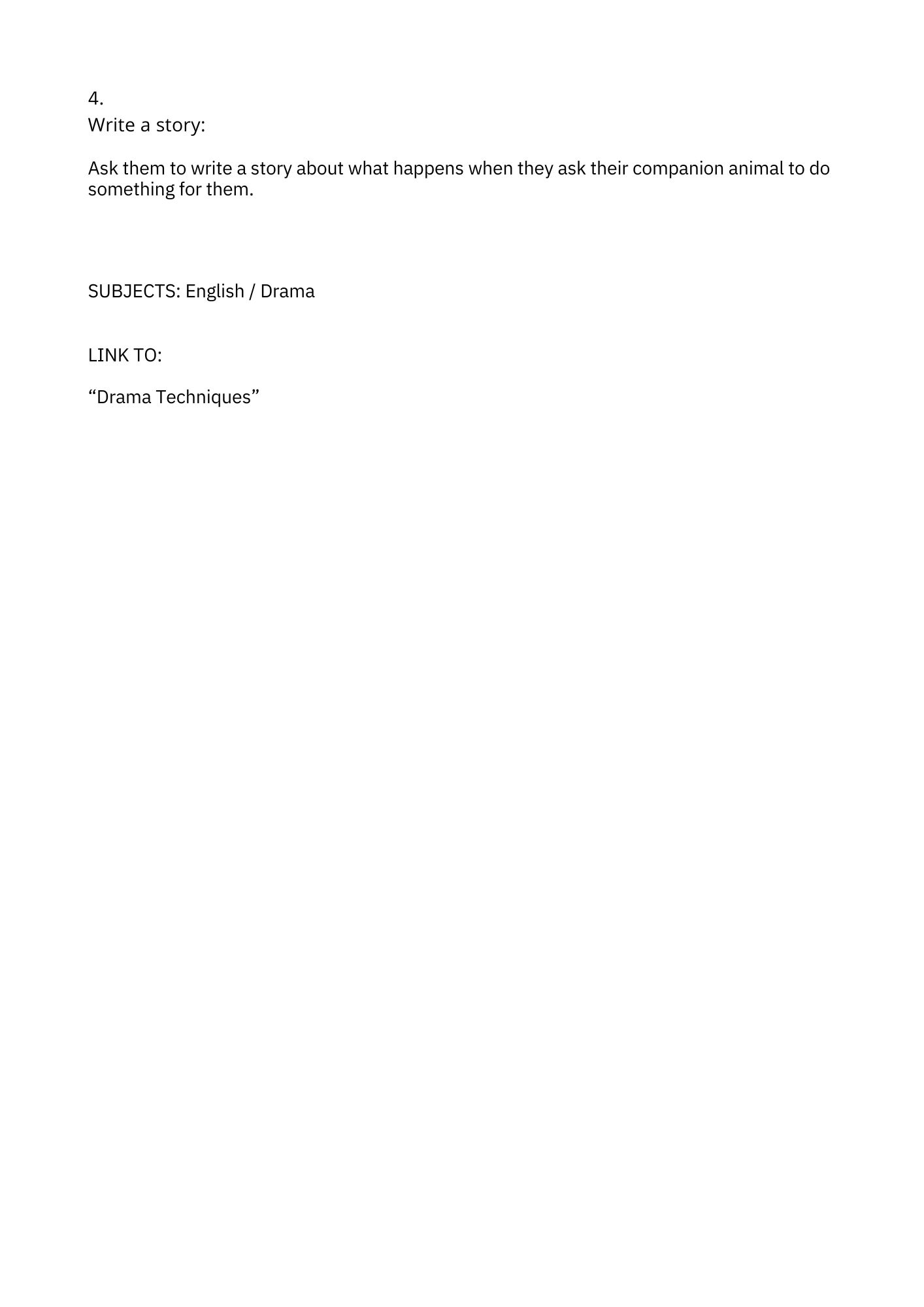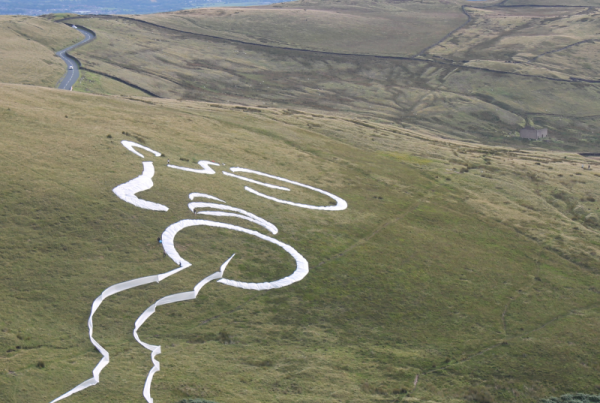Dandy – A Clitheroe Story
Stainless Steel Sculpture By Marjan Wouda
In 1612, when James Device was interrogated by the local magistrate, he confessed to having a “familiar spirit” whom he named “Dandy”. In fact, he said it was the dog who appeared to him, instructed him and bade him ‘ever after’ to call it “Dandy”. It was believed in those days that witches and cunning folk were assisted by a spirit in the form of an animal or human being. James, who grew up in the household of his grandmother Elizabeth Southern, spoke of a black dog that offered him a means of revenge when he felt wronged.
“I set out to tell Lancashire’s most compelling story by creating this familiar spirit; imagining what this dog, that could speak to us and magically come to our aid when we needed it, might look like. It had to be larger than life; a potentially dangerous friend – as indeed it turned out to be for our James.” Marjan
This portrayal of a familiar connects Clitheroe to its landscape setting in the shadow of Pendle Hill. Clitheroe Castle itself is very likely to have played a part in the story as a stop-over for those on their way to Lancaster Gaol. Margaret Pearson, one of the 12 accused in 1612, who is also referred to as the Padiham Witch, was sentenced for bewitching a horse, and made to stand upon the pillory in Clitheroe on 4 successive market days.
Dandy installed in 2024 puts Clitheroe on the map, making it a not-to-miss location for visitors to Lancashire and the Ribble Valley.
VISIT DANDY
Dandy is easy to reach by both public transport and car. It is situated in Clitheroe Town Centre between Clitheroe Castle and the Clitheroe railway station.
Booths Supermarket
Station Road
Clitheroe
BB72JT
“I set out to tell Lancashire’s most compelling story by creating this familiar spirit; imagining what this dog, that could speak to us and magically come to our aid when we needed it, might look like. It had to be larger than life; a potentially dangerous friend – as indeed it turned out to be for our James.” Marjan
“Lancashire, with its unique landscape, story-lore and history, has been a source of inspiration ever since I moved here in the year 2000. It is so other than the Netherlands – the country of my birth. Not only has the industrial revolution left its mark indelibly on land and townscapes, but also the wilder spaces resonate with story. Dig a little and you will find rich characters such as the Dun Cow of Parlick Fell, the Milk-white Doe over near Burnley, and Boggarts – a very Lancashire word –shapeshifting into animals such as hares and dogs near Chipping and across Morecambe Bay.” Marjan
The sculpture depicts a large wolf-like dog, called Skriker, also sometimes known as Padfoot or Trash. This gigantic shaggy black dog is a well-known character in British folklore, often featuring in fireside tales of the ghostly variety. Skriking is Lancashire dialect for shrieking or crying. The story was collected and published by James Bowker in “Goblin Tales of Lancashire” in 1883 and was said to have taken place between Chipping and the river Hodder. It tells of a terrifying encounter with a large black dog in the middle of the night. According to Dr. Simon Young, a British Folklore Historian, Skriker is a boggart – a typically Lancashire phenomenon of an ambivalent or evil solitary supernatural spirit. Another definition is: an ogre attached to a particular location (in this case a bridge over the river Hodder).
Dr John Webster was probably Clitheroe’s greatest citizen & a true polymath. In 1677 he published his famous book ‘The Displaying of the Supposed Witchcraft’ which was influential in changing the attitude to so called witches.
Process: The Birth Of An Idea.
“My sketchbook is the place where an idea first finds expression in an image. It’s the place I go to to start exploring it. A sketchbook is essentially a safe, private space, where I allow myself to make “bad drawings”. For anything new and original to be made, you must take risks; hopefully the bad drawings will lead to better ones and will point to what “research” you need to do. With research I mean finding out how a dog’s bone structure allows it to move. Where it’s joints are. How it’s expression changes when the mouth is open. And whether you can see it’s teeth.
Often, I make a 3D “sketch” in clay or wire, to explore on a small scale how the forms works “in the round”, making sure that it looks dynamic and interesting from all angles.” Marjan
Process: Steel, Paper And Computer Aided Design
“When I set out to find an alternative to bronze, which would allow me to create larger pieces for the public realm and to put those sculptures back in the places that first inspired their story, I discovered that Lancashire has also the most up to date technology in metal-cutting and fabrication, opening new doors for me. It was also at this time that I was introduced to Computer Aided Design at The Making Rooms in Blackburn. This application allowed me to design very precise shapes on the computer; shapes which were infinitely scalable, and which could be used to instruct a laser cutter.
I needed, however, to find a medium other than a computer programme to start developing my ideas, and that medium was paper. Paper of a sufficient thickness to stand up and hold its form. I figured that anything I could make using paper, could be recreated using steel. In this way Dandy first saw the light of day in the form a small 3D paper model or “maquette” made by cutting, bending, and sticking together paper shapes, using bits of cardboard as spacers. Once translated into CAD, they were scaled up and sent to the metal cutting factory. Finally, the steel shapes were bent and welded together in the metal fabricator’s workshop. I decided on stainless steel for the promise of a long life and because it could be sandblasted – leaving it matt as opposed to shiny – which in turn allowed it to be patinated in a dark tone. It is a wholly different site at night, when the up lighters give an extra dimension to the work.” Marjan
“I came to England, aged 19, for the adventure and the certainty that I could get by in this foreign language. Home was a dairy farm which my family occupied as tenants, and which saw us as children quite involved in the jobs of the seasons, such as the birth of calves, and haymaking. I believe that this life so close to the physical bodies of animals in a place made up of layer upon layer of clay, was a formative experience.
Charcoal studies of cows on our farm in the North-East of the Netherlands. A traditional red/brown breed of cow with white faces and patches around their eyes.
Art college was at this time a distant dream, however, and I sought the life experience I craved in working “with people” initially as voluntary work and later in paid employment.
I found myself turning to art to deal with my experiences – it was as though art found me – and so I decided to go to art college, training in Manchester and London. Drawing is really at the core of what I do, which made it difficult to choose between painting and sculpture. A tutor’s observation that my drawings revealed an awareness of 3Dimensional form led me to choose the sculpture studio. I love the adventure of engaging with all kinds of materials, which I play with on order to discover its nature and possibilities.
My search for a house with a studio led me away from Manchester into Lancashire, which felt like home the moment I arrived. The ever-varied landscape with its wild spaces and history of industry makes it the place for me.” Marjan
Animals
“Animals have been a constant subject in my work; having grown up on a dairy farm, our connection – due to a history of living side by side – remains a deep source of interest. Our stories are a testament to those intertwined lives, and no less relevant today as we wake up to the fragile reality of our planet’s finite resources.” Marjan
Sculptures In The Public Realm
The Wader, a sculpture of a heron in Entwistle Reservoir, is an impressive 2.7metres tall. Standing at the water’s edge and made from galvanised steel it blends beautifully into the elements and is a treasured Turton landmark much admired by walkers and the local community.
Situated in Darwen’s Upper Bold Venture Park, Wouda recreated a Victorian parlour in response to the life of wallpaper designer James Huntington. The decorative shapes within the oversized table and chair in their woodland ‘room’ are inspired by Huntington’s designs. Huntington’s Parlour is a gigantic, playful feature irresistible to children, and a resting place much appreciated by families and hikers on the long climb up to Darwen Tower.
The sculpture is one of several pieces in steel making up a heritage trail snaking its way through this green space, telling the stories of the park and its location.
One of Wouda’s latest pieces is the magnificent Sir Hare. It stands at more than 3.5 metres and is made from corten steel. It has drawn crowds in Liverpool, where it stood in the Baltic Triangle for more than a year, in Gisburn Forest, Whitaker Park in Rossendale and Wyresdale Park in The Forest of Bowland.
For more information on the artist go to: www.marjanwouda.com
Fine And Dandy
By Alison McNulty
There he stands looking sharp, fine and Dandy,
an imaginative mythmaker’s dream
with steel brush tail and his sleek face snarling.
But things are not always as they seem.
You’d know if they’d allowed his testimony:
‘My name is Dandy – master James gave it me
’cos I’m always willin’ to do ‘is biddin’.
and my job’s to take care of him you see.
I’m a good dog, me, but some say I’m wicked.
Often, when ’ee takes me out rabbitin’,
mi’ swift spindly legs serve me a treat,
catch ’em in a flash then ee’s got his dinner.
My name is Dandy – my master gave it me.
Once I ’elped ‘im steal, then kill, the sheep
our pack ate at t’do they gave at Malkin.
James gave me a bloody chunk as a treat
‘cos I’m always willin’ to do ‘is biddin’.
There was bad blood between us and t’Whittles
who took our stuff – Demdike wasn’t pleased.
When I saw ‘em I stood at the front snarling,
as my job’s to take care of ’im you see.
Taken to trial by the servants of t’King
it’s said he got insensible, weak,
then died. Sure that isn’t true, I keep staying.
I’m a very good dog. My name is Dandy.
You can see me now waitin’ and peerin’.
When master was charged with killin’ by bewitchin’
’ee said stay as ’ee was taken off screamin’.
I’m a good dog me, but some say I’m wicked.
Printable Education Pack
Printable Education Pack
Printable Education Pack
“Here is someone whose work is indeed true sculpture. She possesses an almost surreal twist to her work that immediately makes it thought provoking. Some of her work has a tenderness that is most moving, an emotion that is usually lacking in modern sculpture.”
— Sir Kyffin Williams, Painter and Royal Academician (1918-2006), widely regarded as the defining artist of Wales during the 20th Century
“Tension informs her work. There is a fundamental conflict between the means of representation and the thing represented that lends a dynamic force to everything that Marjan does. There is wit too. Dog performing headstand is a splendid conceit and is much enjoyed by visitors here at Bury Art Gallery and Museum.”
— Richard Burns, Curator, Bury Art Museum and Sculpture Centre
This sculpture was funded by:
Booths
Lancashire County Council
Clitheroe Chamber of Trade & Commerce
Clitheroe Town Council
Houldsworth Solicitors
Hargreaves Contracting
Anderton Bosonnet Estate Agents
Arts Council England
Ribble Valley Borough Council
Clitheroe Civic Society
& many organisations and individuals who backed this project through crowdfunding
Thank you for making it happen.
For anyone interested in the history of the area, or with a specific interest in the history of the Pendle Witches, go to….
For anyone interested in sculpture there is much to be discovered in the Ribble Valley Sculpture Trail
An introduction to the work of Marjan Wouda, the creative process & inspiration behind “Dandy’ that stands proudly in Clitheroe town centre.
